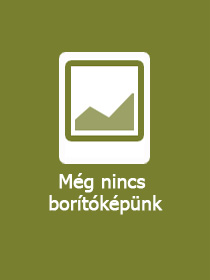
A termék adatai:
| ISBN13: | 9781398518933 |
| ISBN10: | 139851893X |
| Kötéstípus: | Puhakötés |
| Terjedelem: | 288 oldal |
| Méret: | 197x129x17 mm |
| Nyelv: | angol |
| Illusztrációk: | none |
| 700 |
Témakör:
How to be a Bad Botanist
Kiadó: Simon & Schuster UK
Megjelenés dátuma: 2025. április 10.
Kötetek száma: Paperback
Normál ár:
Kiadói listaár:
GBP 10.99
GBP 10.99
Az Ön ára:
4 728 (4 502 Ft + 5% áfa )
Kedvezmény(ek): 15% (kb. 834 Ft)
A kedvezmény csak az 'Értesítés a kedvenc témákról' hírlevelünk címzettjeinek rendeléseire érvényes.
Kattintson ide a feliratkozáshoz
Kattintson ide a feliratkozáshoz
Beszerezhetőség:
Még nem jelent meg, de rendelhető. A megjelenéstől számított néhány héten belül megérkezik.
Rövid leírás:
From the author of&&&160;Rewild Yourself&&&160;and&&&160;How to Be a Bad Birdwatcher, a light-hearted guide to realising you know more about plants than you might think.
From the author of&&&160;Rewild Yourself&&&160;and&&&160;How to Be a Bad Birdwatcher, a light-hearted guide to realising you know more about plants than you might think.
&&&160;
Hosszú leírás:
Can you tell a tomato from a grape? A patch of grass from a Christmas tree? Then congratulations – you’re a botanist.&&&160;
Self-confessed bad birdwatcher Simon Barnes thought he knew nothing about plants. He didn&&&39;t have anything against them: trees are interesting because birds perch in them; plants are useful because they create habitats, and all birds live in habitats. But while admiring the tenacity of some yellow horned poppies thriving on a shingle beach – a place where it seemed no plant had a hope of surviving – he was struck by a simple yet profound truth. It all begins with plants.
In this charming and inspiring book, Barnes takes us on a fascinating journey, from the simple genius of photosynthesis to the complex and bizarre ways that plants reproduce. We consider plants as varied as cabbages and conifers, familiar wildflowers and enigmatic orchids, nefarious parasites and plants that carry deadly poisons – helping us better appreciate the beauty and diversity of the natural world.
Both a primer on botany and an exploration of how plants make our external and interior worlds,&&&160;How to Be a Bad Botanist&&&160;opens our eyes to the wonders around us.&&&160;Plants are everywhere, in every part of your life, and you know more than you think.
&&&160;
‘I’d give Simon Barnes’s How to Be a Bad Botanist to anyone interested in what we take for granted, the plants around us. He writes as an everyman, not an expert, which makes the book accessible and appealing.&&&39;
Self-confessed bad birdwatcher Simon Barnes thought he knew nothing about plants. He didn&&&39;t have anything against them: trees are interesting because birds perch in them; plants are useful because they create habitats, and all birds live in habitats. But while admiring the tenacity of some yellow horned poppies thriving on a shingle beach – a place where it seemed no plant had a hope of surviving – he was struck by a simple yet profound truth. It all begins with plants.
In this charming and inspiring book, Barnes takes us on a fascinating journey, from the simple genius of photosynthesis to the complex and bizarre ways that plants reproduce. We consider plants as varied as cabbages and conifers, familiar wildflowers and enigmatic orchids, nefarious parasites and plants that carry deadly poisons – helping us better appreciate the beauty and diversity of the natural world.
Both a primer on botany and an exploration of how plants make our external and interior worlds,&&&160;How to Be a Bad Botanist&&&160;opens our eyes to the wonders around us.&&&160;Plants are everywhere, in every part of your life, and you know more than you think.
&&&160;
‘I’d give Simon Barnes’s How to Be a Bad Botanist to anyone interested in what we take for granted, the plants around us. He writes as an everyman, not an expert, which makes the book accessible and appealing.&&&39;







